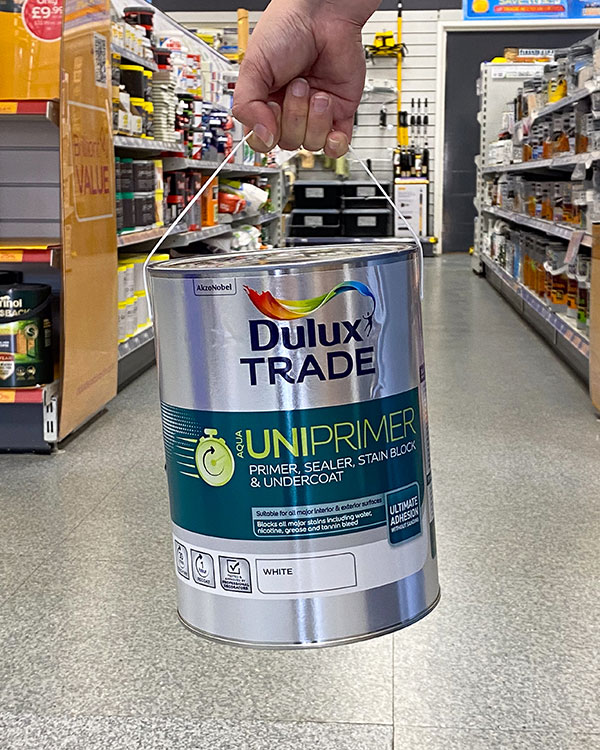For any housing association, the safety and wellbeing of building occupants is the top priority. With new regulations on the horizon, Dulux Trade explores how housing associations can prepare, and ensure they know what paints and coatings should be used to protect residents and maintain properties to a high standard.
In October of this year, the UK government is introducing the Hazards in Social Housing (Prescribed Requirements) (England) Regulations 2025, also known as Awaab’s Law. The regulations will call on social landlords to ensure they investigate and remedy emergency and potential significant hazards in a timely manner.
Awaab’s Law applies to the types of hazards prescribed by the housing health and safety rating system (HHSRS), including damp and mould. Under the new regulations, social landlords must investigate potential emergency hazards within 24 hours of becoming aware of them – and potential significant hazards within 10 working days. A written summary of the investigation findings should then be provided to the tenant within three working days, and relevant safety work must be undertaken within five working days of the investigation concluding (if a significant hazard is identified).
Addressing damp and mould issues
Under Awaab’s Law, housing associations must protect occupants from issues like mould and damp to ensure safe living conditions. Damp and mould are a common problem within housing, especially in older properties and during cold or wet weather. If left untreated, mould can cause serious health issues for building occupants as it is a form of fungus that releases toxic spores and vapours into the air. Whilst mould causes risk to everyone, it is particularly dangerous for vulnerable individuals like children and those with weakened immune systems.
To ensure occupant safety, it is vital that housing associations work with contractors to identify and address the underlying cause of the mould (rather than simply painting over it), otherwise it will continue to grow back, even after treatment.
Once the underlying cause of the mould has been addressed, the mould should be removed and the surface treated to prevent regrowth. Fungicidal washes and mould removers, such as Dulux Trade Weathershield Fungicidal Wash and Polycell Mould Remover, can be used for this. These products contain powerful fungicides which remove mould - and are ideal for preparing mould prone areas before painting to give a better paint finish.

Selecting the right paints and coatings
Once the mould has been removed, treated and the surface is dry, the area can then be painted over. A stain-blocking primer should be applied first, to prevent mould and damp stains from bleeding through the new paint and impacting the finish. To ensure time efficiencies, a multi-functional product like the new Dulux Trade Aqua UniPrimer that offers a primer, sealer, stain block and undercoat in one advanced formula should be used. This product is suitable for all major interior and exterior surfaces, and means that only one, quick-drying product is needed before applying the topcoat.
When selecting a paint for the topcoat, it is vital to choose a product that will prevent mould regrowth. Look for a paint like those in the Dulux Trade Mouldshield Fungicidal range, that contain a special fungicide in the paint film which inhibits the growth of fungi and mould inside buildings, helping to prevent mould from reappearing on the paint film. The products’ broad spectrum of antifungal activity makes them ideal for most interior walls and ceilings that are likely to be disfigured by mould.
Dulux Trade Mouldshield is available in matt and eggshell finishes. For areas that need additional protection from moisture, such as kitchens and bathrooms, Dulux Trade Mouldshield Fungicidal Eggshell is recommended as it offers additional moisture resistance compared to Dulux Trade Mouldshield Fungicidal Matt.

In addition, there are a wide range of colours available so housing associations can prevent mould regrowth, whilst simultaneously bringing colour to spaces and making them feel welcoming and homely.
In conclusion, housing associations have a crucial role to play in ensuring homes are safe for occupation. In the event of mould and damp, they must act swiftly and work with contractors to choose suitable paints and coatings that will protect surfaces and prevent mould from regrowing.
To find out more about how Dulux Trade can support your next project, visit: https://www.duluxtradepaintexpert.co.uk/en?utm_campaign=duluxtrade_specifier_2025&utm_source=press&utm_medium=print&utm_term=specifiers&utm_content=HousingAssociationJuly2025
- Log in to post comments













